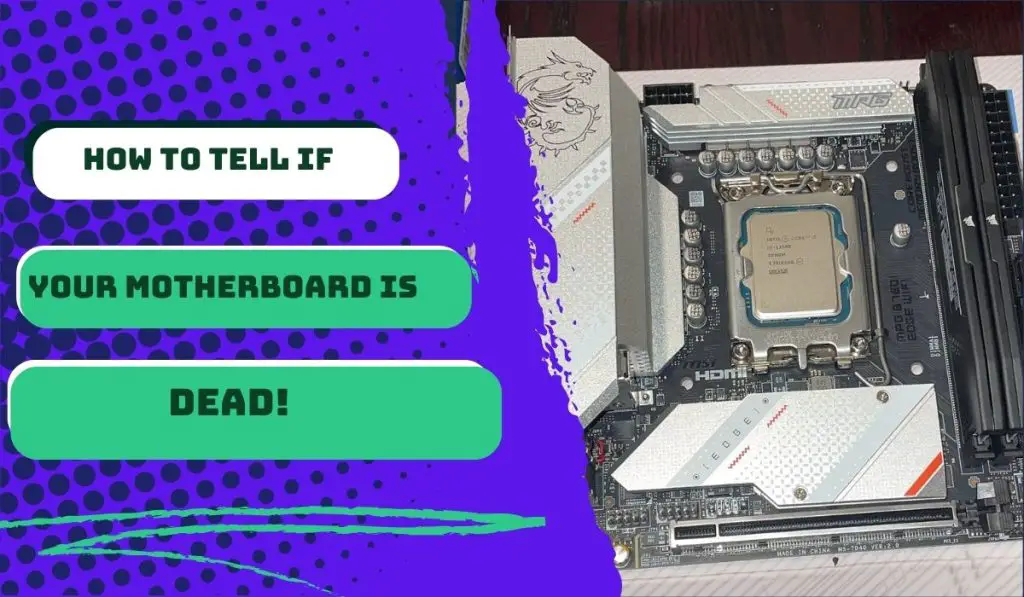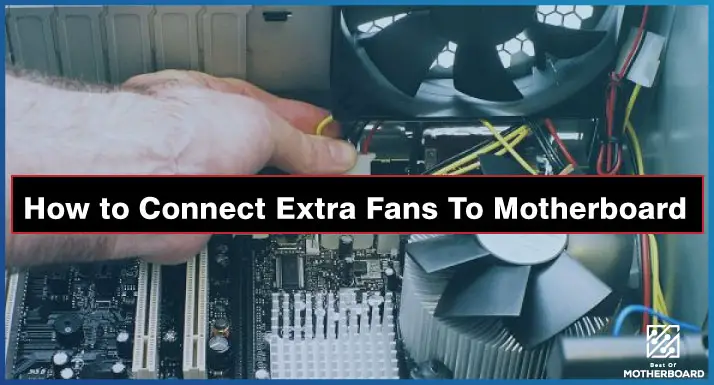The easiest way to confirm that your motherboard is dead (or failing) is to look out for signs such as a complete lack of power when turning on the computer, no response or beeps from the system, failure to boot or display anything on the screen, and non-functional USB ports. To be sure, you’ll need to test with known working components or seek technical experts.
You could be about to turn on your PC and notice nothing works. The fans may spin, but there is no screen, no POST, and no USB power. You begin to make a wild guess that the motherboard is failing (if not dead already), but you’re still a little reserved about spending a few bucks for a technician to confirm or deny your suspicions.
The good news is that there are ways you can tell if your motherboard is dead. Often, it starts with recalling what you were doing right before the motherboard went dark.
I’ve been a technician for ten years, and customers come to me with their motherboards for this reason. There are a few essential questions I usually ask:
- Was the computer overheating?
- Did you OC it too aggressively?
- Did you see smoke or perceive a burning smell oozing out of the case?
Your answers to these questions alone are often enough to determine if the motherboard still has life. But in many cases, I’ve had to carry out a complete diagnosis to be accurate. Here’s how you can do it:
7 Sure-fire Signs That Tell Your Motherboard Is Dead
Note that some of these signs and diagnoses will require you to physically work on your motherboard (think: swapping PSU, RAM, PSU, and so on). So make sure you turn the power supply off before engaging.
Also, discharge yourself of static electricity. You can use a static wristband before interacting with the motherboard.
1. No Power
If your computer doesn’t turn on, it could be a sign of a dead motherboard.
Check if the power supply is functioning correctly, as a faulty power supply can also cause similar symptoms.
2. No BIOS or Boot Screen
When you power on your computer, if you don’t see the manufacturer’s logo or any signs of the BIOS (Basic Input/Output System) screen, it could be a sign of a dead motherboard.
However, this is not enough for you to conclude. Sometimes, no BIOS or boot screens may also be caused by other hardware components, such as a faulty or malfunctioning GPU or RAM, defective peripheral devices, a damaged PSU, or even an incorrect BIOS configuration.
So it’s worth troubleshooting further before concluding.
3. No POST Beep Codes
During the Power-On Self Test (POST), your motherboard is designed to emit a series of beeps to indicate if everything is functioning correctly.
Whether you use Asus, Gigabyte, ASRock, or MSI, your motherboard will have beep codes, which are the first and most reliable guide for troubleshooting a hardware issue in a system.
If you don’t hear any beeps or if the beeps are inconsistent or abnormal, it may indicate a problem with the motherboard because it means no hardware is at fault.
4. No peripheral functionality
If your keyboard, mouse, or other peripherals connected to your computer are unresponsive or malfunctioning, it could be due to a malfunctioning motherboard.
However, don’t jump the gun without checking if the issue is isolated to the peripherals. Try testing them on another system.
5. Continuous Reboot Loop
If your computer continuously restarts without successfully booting into the operating system, it can be a sign of a faulty motherboard.
Other factors, such as a software issue or a failing power supply, can cause this symptom.
But once this happens, along with the other signs mentioned above, then it raises the chances that the motherboard is failing.
6. Overheating or burning smell
If you notice a strong burning smell or excessive heat coming from your motherboard, it could indicate a severe problem.
I know what you’re thinking. The burning smell from overheating is usually associated with a short circuit or a component failure.
You’re right. But when you troubleshoot for hardware defects and can’t catch any, it’s a telltale sign that the problem has to do with the motherboard itself.
7. Failed diagnostic tests
If you have access to diagnostic tools or software such as Hot CpuTester and Astra that can test the functionality of your motherboard, running these tests and receiving a failure result strongly suggests a dead or malfunctioning motherboard.
What Causes a Dead Motherboard?
Diagnosing a dead motherboard can be challenging, as the symptoms can sometimes be similar to other hardware or software issues.
But once you’ve confirmed that the motherboard is dead, your next line of reasoning is most likely the cause. Often, how you discover your motherboard is dead will tell so much about the culprit. But these are the common causes of motherboard failure.
Power surges: Sudden spikes in electrical power can damage the motherboard’s components, such as capacitors or voltage regulators, rendering it inoperable.
Overheating: If the motherboard’s cooling system fails or the computer is subjected to extreme heat, it can damage or fail the motherboard.
Physical damage: Dropping or mishandling a computer can damage the motherboard, such as through cracked traces or solder joints, which can prevent it from functioning correctly.
Electrical shorts: If there is a short circuit on the motherboard due to faulty components, loose screws, or metal objects touching the board, it can result in irreparable damage.
Aging or wear and tear: Over time, the motherboard’s components may degrade, primarily capacitors, leading to failures or malfunctions. A good motherboard should last for 4–5 years of durable performance before seeing its last days.
Incompatible hardware or BIOS issues: Installing incompatible components or performing a faulty BIOS update can cause conflicts or errors that render the motherboard non-functional.
Manufacturing defects: In rare cases, a motherboard may have manufacturing defects that affect its functionality or reliability.
A typical example were the reports that several affected Z690 Hero motherboards made by Asus were burning and producing smoke after regular use.
Can a Dead Motherboard Be Repaired?
In most cases, a dead motherboard cannot be repaired. When a motherboard fails, it usually requires replacement rather than repair.
As you know, motherboard components are complex and interconnected, making it difficult to isolate and fix specific issues.
Also, if you think about it, you’ll agree that the cost and effort involved in repairing a motherboard often outweigh the benefits compared to purchasing a new one. For example, PC repair services such as Lapfix, Nerds on Call, and Computer Repair Doctor can charge you as much as $300 for motherboard repair or replacement of damaged parts.
That is the same price as buying a brand new Gigabyte Z790 AORUS Elite or even an Asus TUF Gaming Z790-Plus.
However, if the motherboard failure is due to a specific component, such as a blown capacitor, it may be possible to replace that component, but it requires advanced technical skills and specialized equipment.
It’s generally more practical and cost-effective to replace a dead motherboard than to repair it.
Finally,
Detecting that a motherboard is genuinely dead can be tricky. If your motherboard has LEDs on it and it lights up during the POST, it means a defective component could be the cause of the warning signs you see. So if the LED works, then your motherboard is most likely fine.
Also, functional beeps are good signs that your motherboard isn’t failing. In nine out of ten cases of dead motherboards I diagnosed in my workshop, the boards failed to post, illuminate a LED display, or make a beep code sound.
If your motherboard doesn’t have a speaker, it doesn’t rule out this change. You can check if the PSU works using a PSU tester.
Overall, you can tell if your motherboard is failing when you observe no power, no BIOS and boot screen, the absence of beep codes, no peripheral functionality, and severe physical damage.




![How to Add More SATA Ports to Motherboard? [Guide] 5 How to Add More SATA Ports to Motherboard](https://bestofmotherboard.com/wp-content/uploads/2022/02/How-to-Add-More-SATA-Ports-to-Motherboard.jpg)
![How To Install Motherboard Drivers With USB? [Guide] 6 How To Install Motherboard Drivers With USB](https://bestofmotherboard.com/wp-content/uploads/2022/02/How-To-Install-Motherboard-Drivers-With-USB.jpg)